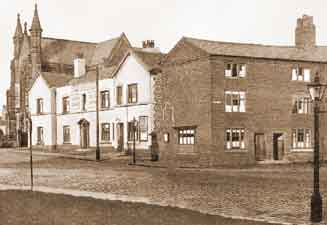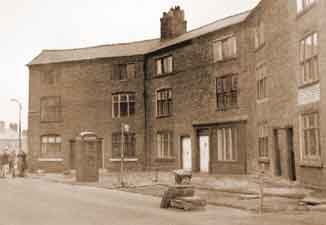
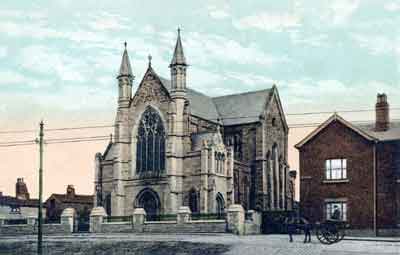
Dukinfield Old Chapel, early 20th century.
![]() The landowner of the chapel site that came to be known as Chapel Hill was Sir Robert Duckenfield, 1st Baronet, (c.1642-Nov 1729). He was the son of Lieutenant Colonel Robert Duckenfield.
Sir Robert was the High Sheriff of Cheshire in 1675 and he was buried at Old Hall Chapel, the domestic chapel of Dukinfield Hall.
The Lords of the Manor, the Duckenfields, were puritans and they had a chapel accompanying their residence at Dukinfield Hall.
The landowner of the chapel site that came to be known as Chapel Hill was Sir Robert Duckenfield, 1st Baronet, (c.1642-Nov 1729). He was the son of Lieutenant Colonel Robert Duckenfield.
Sir Robert was the High Sheriff of Cheshire in 1675 and he was buried at Old Hall Chapel, the domestic chapel of Dukinfield Hall.
The Lords of the Manor, the Duckenfields, were puritans and they had a chapel accompanying their residence at Dukinfield Hall.
Accordingly, a plot of land on the hill for the chapel to be built on was leased to the congregation that had grown up around the ministry of the Revd Samuel Angier (8 Aug 1639-8 Nov 1713). According to custom, the land was on a renewable lease of three lifetimes at an annual rent of ‘sixpence if demanded’. In 1826, the land was conveyed to the Chapel Trustees by a successor to the Duckenfield title, Francis Dukinfield-Astley (1781-1825). As Francis died in 1825 this was probably a bequest in his will.
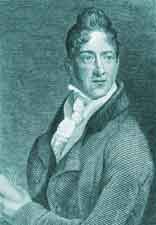
Francis Dukinfield-Astley.
Francis Dukinfield-Astley was born at Dukinfield Lodge, built in the early 1770s by his father, John Astley (24 Jun 1724–14 Nov 1787). John Astley had inherited the Dukinfield Estate and he supported the local coal, iron and cotton industries that were of benefit to the town. He was a noted portrait painter and amateur architect and he built the lodge on a prominence overlooking the river Tame with an entrance to it from Crescent Rd.
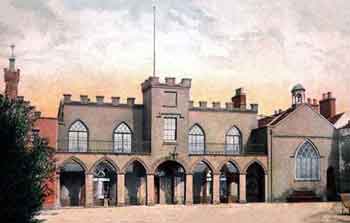
Dukinfield Lodge.
In 1707 work began on building the first chapel for public worship in Dukinfield and this was known as ‘White Chapel’. Evidently the chapel got its name from the colour of some of the stone used in its construction. The inaugural service was held on the 26 August 1708 when the Revd Samuel Angier preached the sermon.
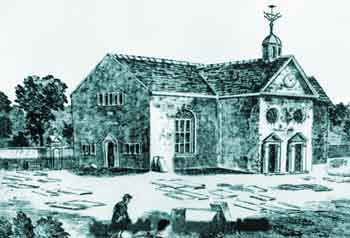
White Chapel.
The Revd Samuel Angier was the nephew of the Revd John Angier (1605-1677) at Denton Chapel and he assisted his uncle at Denton. After the death of John Angier the congregation at Denton Chapel wanted Samuel Angier to succeed him but instead the Fellows of Manchester Collegiate Church (Manchester Cathedral) appointed the Revd John Ogden who was a Conformist. As a consequence, Samuel moved permanently to Dukinfield where he became a minister of dissenters at ‘White Chapel’.
By 1839 'White Chapel' was in poor condition and plans were being drawn up for a replacement. However, on the 7 January 1839 it was irreparably damaged by a storm and stone from this was used as the foundations for the second chapel to be built on the site. This opened on the 26 August 1840, 132 years after the opening of ‘White Chapel’. This chapel is noted for its neo-Gothic architecture, cantilevered pulpit and organ built by Alexander Young & Son of Manchester. The architect was Richard Tattersall (1802-44) of Fountain St, Manchester. Dukinfield Old Chapel is listed Grade II*, List Entry No. 1068077.

The neo-Gothic west window after alterations to the chapel by the architects Worthington and Elgood of Manchester in 1891/93. The stained glass is by Françoir Ambroise Commere and Jean Baptiste Capronnier of Brussels. The three inner panels are from the chapel of 1840. The centre panel depicts the crucifixion, the panel on the left shows Jesus blessing children and the one on the right shows the healing of Bartimaeus who was blind. The two outer panels were new at the time. The five panels are surmounted by geometric tracery.
Old Chapel Sunday School This school was built in 1810 on Town Ln on the corner of Pickford Ln and it replaced a school that stood in the yard of Old Chapel that was demolished in 1775. The land near Chapel Hill was provided by Francis Dukinfield-Astley. A third storey was added to the building in 1820 and it was extended in 1839 and again in 1882. In due course it became a primary day school managed by Cheshire County Council but it was still used as a Sunday school. This system continued until 1985 when a new primary school was built which resulted in its eventual demolition. Pickford Mews now stands on the site.
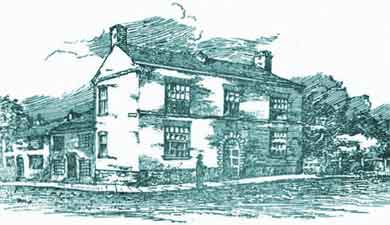
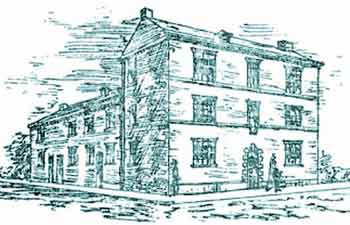
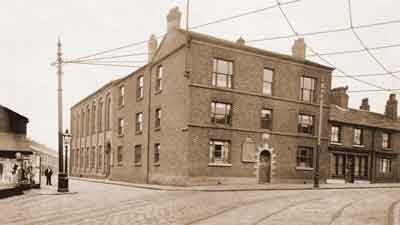
Old Chapel Sunday School, early 20th century.
Nevertheless, prior to the establishment of a purpose-built school the first Sunday school was founded in 1800 by the Revd James Hawkes (1771, Buckingham-1846, Nantwich). This was at a cottage on Old Rd before moving into the garret of a hand-loom weaver’s cottage on Half Moon Crescent, Chapel Hill, at the intersection of Foundry St and Town Ln.
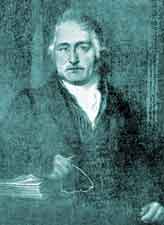
Revd James Hawkes.
